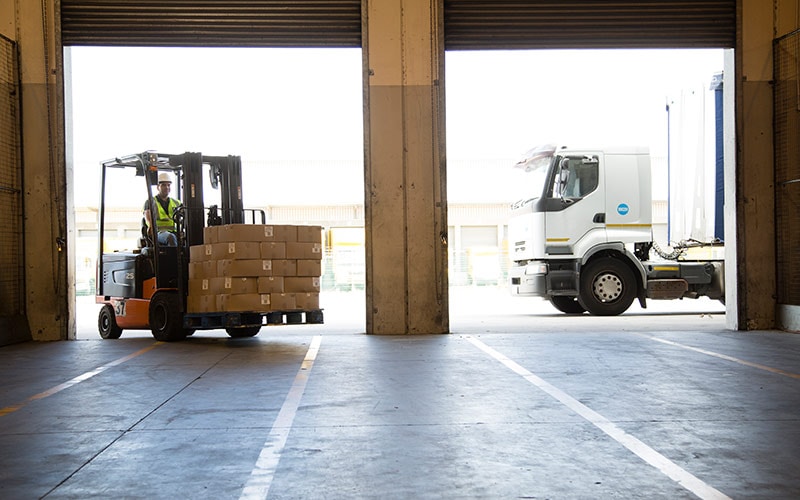Insights
- Formed through the acquisition of Marelli’s HVAC business, Highly Marelli needed to integrate diverse systems and cultures across regions.
- The company grappled with over 20 legacy systems, TSA deadlines, and fragmented operations across China, Japan, Europe, and North America.
- SAP S/4HANA on AWS Cloud enabled centralized operations, standardized data, and real-time collaboration across plants, warehouses, and headquarters.
- Infosys helped Highly Marelli exit TSA, implement lean manufacturing strategies like JIT and JIS, and establish a scalable global template starting with Japan.
- The transformation laid the foundation for a unified, agile enterprise ready to respond to market shifts and drive innovation globally.

Highly Marelli’s Digital Journey with Infosys
Explore how Highly Marelli collaborated with Infosys to revolutionize its global operations using SAP S/4HANA. In this video, Mr. Wang, Head of GHQ IT Division, shares how they tackled legacy IT hurdles, unified processes, and sparked innovation across Asia, Europe, and the Americas.
Introduction
Highly Marelli, a China-headquartered global leader in automotive thermal management systems, knew that staying competitive in a fast-evolving industry would require more than incremental improvements. With a footprint spanning Asia, Europe, and North America — and a reputation for innovation in heat pump and compressor technologies — the company set out to transform its global operations.
Speaking to Infosys, Wang Chengwei, IT division head at Highly Marelli’s global headquarters, said: “Our ambition has always been to strengthen our global presence and operate as a truly international enterprise.”
That ambition drove the company to rethink its IT landscape and build a unified, scalable, and future-ready enterprise. That meant modernizing its IT landscape, harmonizing processes across regions, and creating a digital foundation that could support growth, improve decision-making, and enable real-time collaboration.
This transformation wasn’t just about upgrading systems — it was about rethinking how the business runs, breaking down silos, and aligning operations with a global vision. By replacing legacy applications and standardizing data and processes, Highly Marelli aimed to become more agile, more efficient, and better equipped to respond to market shifts with confidence.
From acquisition to global vision: The roadblocks to transformation
Highly Marelli was formed when Highly Group acquired Marelli’s automotive HVAC business. HVAC stands for heating, ventilation, and air conditioning — systems that are essential for keeping vehicle cabins comfortable. This move brought together two established companies: Highly, known for its advanced compressor technology and strong presence in the new energy vehicle space, and Marelli, with experience in automotive innovation and global markets. The result was a new company under Chinese enterprise, focused on developing smart, efficient cabin comfort solutions like electric compressors and heat pump systems.
But with opportunity came complexity. The company faced several roadblocks that made transformation both urgent and challenging:
- Fragmented IT landscape: About 20 legacy systems were scattered across plants and warehouses, creating silos and making it difficult to standardize operations or share data effectively.
- Urgent TSA compliance: Post acquisition, as per transition service agreement (TSA), former systems that were outdated continued to be used. However, with TSA deadlines looming over both China and Japan, Highly Marelli Group faced pressure to create independent systems.
- Cultural and operational integration: Merging different organizational cultures, business practices, and regional processes added layers of complexity to the transformation effort.
- Loss of institutional knowledge: The departure of experienced employees after the acquisition created knowledge gaps, making it harder to maintain continuity and drive change.
- Siloed systems and processes: Disconnected systems and isolated business units led to inefficiencies, duplicated efforts, and limited visibility across the enterprise.
These challenges made one thing clear: the goal wasn’t just to adopt new tools, but to build a unified enterprise solution that could support standardized processes, enable global collaboration, and help Highly Marelli operate as one integrated enterprise.

Building the foundation for global growth
Highly Marelli had its sights set on becoming a truly global enterprise — one with smooth, connected operations across all its regions. But to get there, the company knew it couldn’t just patch up what was already in place. With a complex and fragmented IT setup, it needed a complete overhaul — a modern, scalable system that could support its growth and unify its global footprint.
Highly Marelli chose SAP S/4HANA 2022, hosted on AWS Cloud, as the backbone of its transformation. This setup brought together key business functions — like supply chain, inventory planning, and finance — into one unified platform, making it easier for teams to work together across regions. One important part of the solution was enabling real-time communication with customers and suppliers through electronic data interchange (EDI), which automatically exchanges business documents — like purchase orders and invoices — without manual input. This not only speeds up processes but also reduces errors and improves overall efficiency in the supply chain. The first rollout in Japan, covering three manufacturing plants, two warehouses, and the Tokyo headquarters, was more than a local deployment — it was designed as a global template. This setup would serve as the blueprint for future rollouts in Europe and North America.
The key outcomes achieved were:
- Centralized operations: The new system brought together procurement, supply chain, and distribution into a single, unified platform, improving coordination across regions.
- Single source of truth: With a consolidated view of customers and financials, the company gained better visibility and control over its operations.
- Standardized data and processes: A consistent data model and harmonized processes helped reduce errors, improve compliance, and simplify reporting.
- Improved financial and cost management: The SAP solution enabled leaner operations, tighter financial oversight, and more accurate cost tracking.
- Global scalability: The Japan rollout served as a proof of concept for the transformation.
Speaking to Infosys, Wang said: “This wasn’t just about digital transformation — it was about enabling Highly Marelli to operate on a global scale with a modern, SAP-based architecture that simplifies operations, ensures compliance, and creates a foundation for future growth.”
Infosys as a strategic partner for scalable transformation
To make its transformation real, Highly Marelli partnered with Infosys — not just to upgrade systems, but to rethink how the business operates across borders. One of the first priorities was to exit TSA in Japan and China. For Highly Marelli, exiting TSA meant building its own independent IT infrastructure — something that could support operations not just locally, but across APAC, EMEA, and the Americas. This sets the stage for a broader transformation that would unify systems, streamline processes, and enable the company to scale globally with confidence.
With a strong foundation, Highly Marelli and Infosys moved quickly to modernize the company’s broader technology landscape. This meant retiring more than 20 outdated systems and replacing them with a streamlined, unified setup that could support global operations efficiently.
This phase went beyond software updates — it reimagined how the supply chain works. Infosys introduced two key strategies to make operations leaner and more responsive:
- Just-in-time (JIT): This approach ensures that parts and materials arrive exactly when they’re needed — not too early, not too late. It helps reduce inventory costs and keeps production running smoothly.
- Just-in-sequence (JIS): Building on JIT, this method ensures that items arrive in the exact order they’ll be used on the production line. It’s especially useful in complex manufacturing environments where timing and sequence are critical.
To enable these strategies, Infosys implemented EDI for real-time connectivity between suppliers and customers. This improved order accuracy, gave better visibility in the supply chain, and allowed teams to respond faster to changes.
Together, these changes helped Highly Marelli move from a patchwork of legacy systems to a modern, agile infrastructure — one that’s built for speed, scale, and global growth.
How to succeed with a global transformation
Based on Highly Marelli’s transformation journey, here are the key practices organizations can adopt to drive meaningful impact and ensure long-term success in their own transformation efforts:
- Accelerate global rollouts: Use a successful pilot, like the Japan implementation, as a blueprint to expand into other target regions. This helps maintain consistency while speeding up deployment timelines.
- Leverage unified data: With a centralized system in place, tap into unified data to drive smarter analytics, optimize costs, and support faster, more informed decision-making across business units.
- Embed continuous improvement: Don’t stop at go-live. Use built-in SAP tools to monitor performance, track return on investment, and continuously refine processes. This ensures the system evolves with your business needs.
- Upskill teams across regions: Empower your workforce by investing in training and change management. When teams understand the system and its benefits, adoption improves — and so does operational excellence.




